Experiential Learning vs Traditional Training: What Drives Real Behaviour Change?
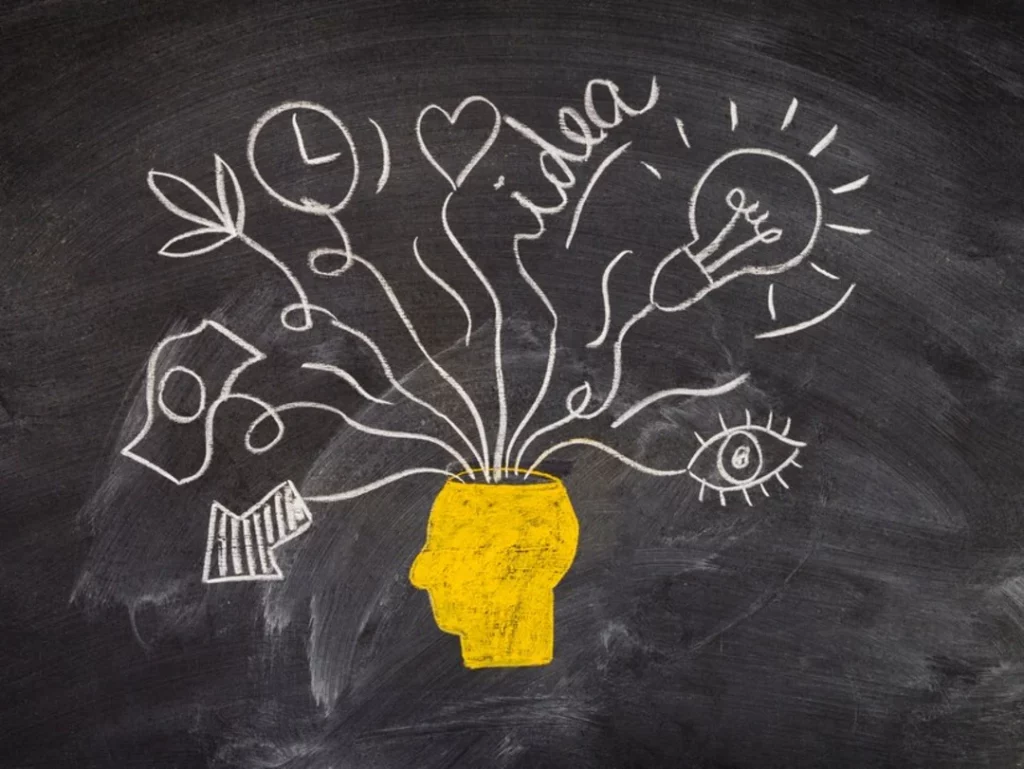
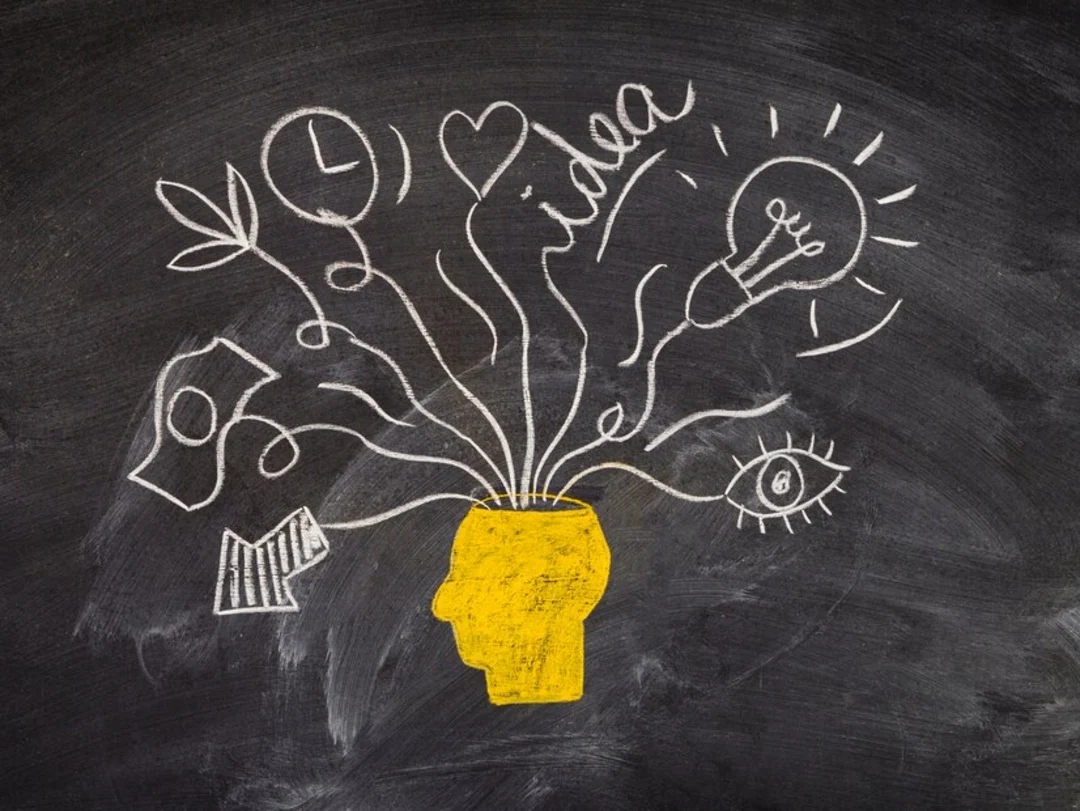
Benjamin Franklin once said, “Tell me and I forget. Teach me and I remember. Involve me and I learn.” This is the essence of experiential learning.
Think about the last time you attended a training session—PowerPoint slides, jargon-filled lectures, maybe a roleplay or two. You also walked out with a shiny, new certificate. But weeks later, how much of it are you actually using at work?
Contrast it to the following scenario – you’re playing a board-game simulation where every decision you make affects your (virtual) team, profits, and market share. You’re under intense time pressure. Your team members push back. You make a call, it backfires. You try again, and this time it works.
That’s experiential learning in action. And that is the reason it’s turning heads in the world of leadership development training.
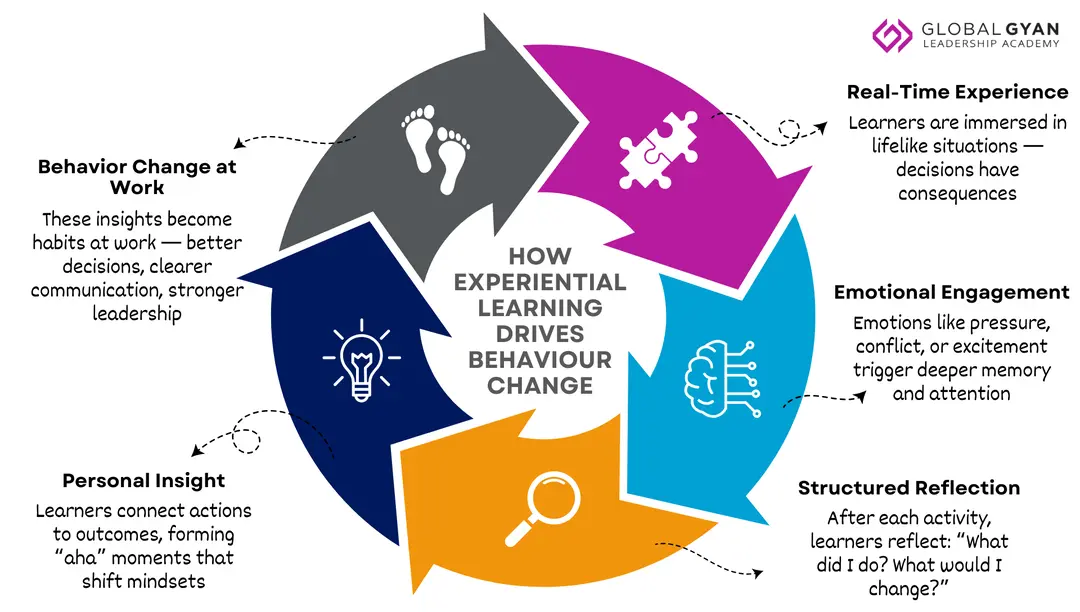
The Real Question: What Actually Changes Human Behaviour?
For L&D and HR professionals, this often becomes the million-dollar question. After investing lakhs and lakhs of rupees in corporate workshops, what really shifts how someone behaves back at work?
Simply put, behaviour change doesn’t happen because of information. It happens because of insight.
And insight is born when experience meets reflection — not just instruction.
Let’s unpack this further.
Difference Between Experiential Learning and Traditional Training
Experiential learning and traditional learning differ from each other in the following fundamental ways:
Feature | Experiential Learning | Traditional Training |
|---|---|---|
Method of Delivery | Real-life simulations, games, roleplays | Lectures, presentations, written materials |
Learner Involvement | High engagement, with quick decision-making | Passive listening |
Feedback Mechanism | Immediate consequences and peer feedback | Delayed or generic feedback |
Focus | Learning by doing and reflecting | Learning by absorbing information |
Impact on Behaviour | Higher recall and real-life application | Limited retention and behavioural change |
Choosing one over the other often involves taking many things into consideration.
Why Traditional Training Often Misses the Mark (vs. Experiential Learning)
Traditional training is not entirely obsolete. It still has value when the goal is to build awareness, explain policies, or provide theoretical grounding.
But when it comes to behavioural transformation, here’s where traditional methods fall short:
- Low Engagement
Most traditional training sessions are lecture-heavy, with minimal participant interaction. Learners sit passively, absorbing information without actively applying it. This leads to boredom, zoning out, and ultimately, very low retention — especially when the topic is as nuanced as leadership.
- Forgetting Curve
Ebbinghaus’ forgetting curve posits that reveals that people forget nearly 25% of what they learn within a week & 90% of what they learn within a month, unless it’s reinforced through practice. Traditional formats, which are one-off and content-heavy, rarely provide opportunities for repeated learning or application. Without reinforcement, even the most insightful points fade away.
- No Safe Environment to Fail
In real life, failure teaches the biggest lessons — but most traditional training avoids letting participants make mistakes. There’s little room for experimentation, risk-taking, or testing ideas. This creates a learning bubble where people “know” what to do, but never feel the pressure or practice their responses.
Resource Corner: Looking for experiential learning programs? Explore Our Offerings
Experiential Learning: Learning That Sticks
In experiential learning, the learner becomes the decision-maker. The trainer becomes a facilitator (of the decision). The environment becomes a safe lab for real-time mistakes, feedback, and course correction.
Experiential learning is known to drive deeper behaviour change, especially in leadership development training:
- It engages the whole person.
Experiential learning doesn’t just stimulate the mind, it involves emotions, instincts, and actions. When people are placed in realistic scenarios, they’re forced to think, feel, and respond under pressure. This multi-dimensional involvement leads to stronger memory and deeper personal insights, especially in leadership development training. Remember this simple form
- It replicates workplace complexity.
Leadership isn’t taught through theory alone — it’s developed in messy, high-stakes situations. Experiential learning mimics this chaos through simulations and roleplays that mirror team dynamics, resource constraints, and competing priorities. It prepares learners for the real-world grey zones where leadership truly comes alive.
- It instigates reflection.
After every experiential activity comes the most crucial moment: guided reflection. Learners pause to ask:
- What did I do?
- What worked or didn’t?
- How do I handle this differently next time?
This helps them extract lessons from their actions, which in turn, converts experiences into lasting behavioural shifts, far more than any theory ever could .
Types of Experiential Learning in Leadership Development Training
Experiential learning can be conducted in any of the following ways in leadership development training:
- Board Game Simulations
Board games, like Game of Stones, designed for business contexts simulate real leadership challenges like decision-making under pressure, trade-offs, and stakeholder dynamics. In experiential learning programs, these simulations offer a safe space to experiment, fail, and retry without real-world consequences. This format makes leadership development training highly engaging and outcome-driven.
Resource Corner: Break the monotony of your training programs with our board game simulations.
- Leadership Labs
Leadership labs create dynamic environments where participants solve complex, ambiguous problems—often without clear instructions. These labs are a powerful form of experiential learning that pushes participants to lead through uncertainty and think on their feet. They are particularly effective in leadership development training aimed at building executive presence and adaptability.
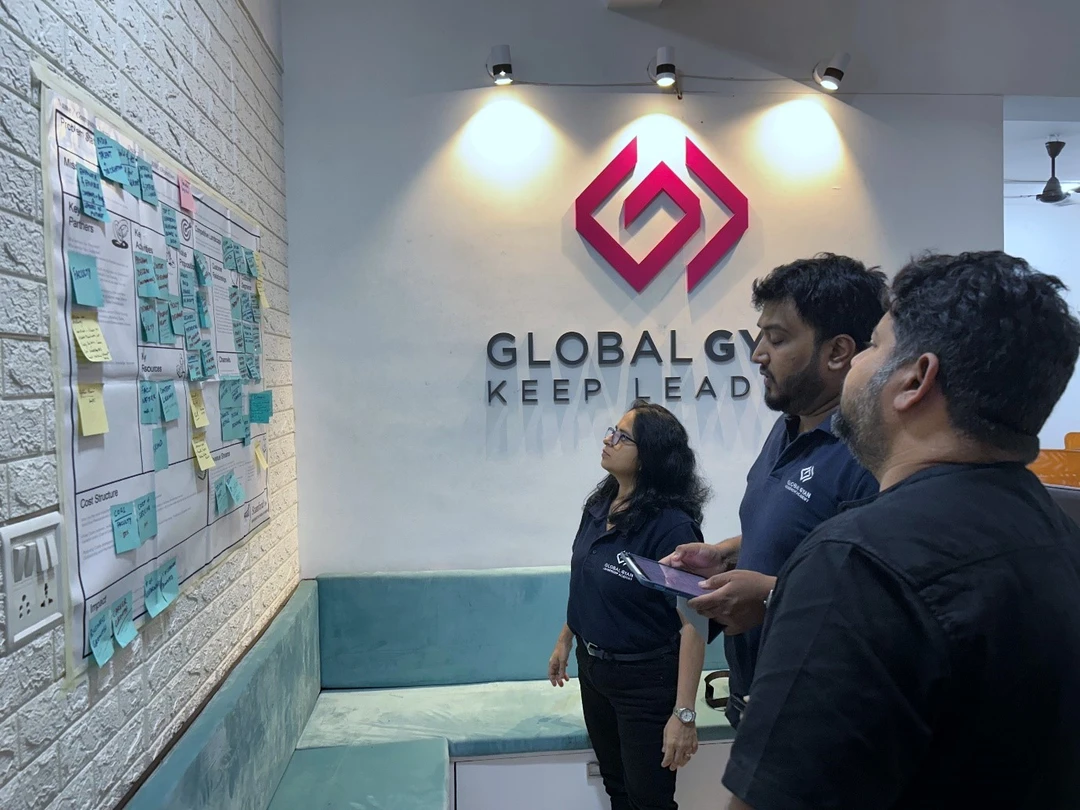
- Live Business Projects
In this approach, learners take on actual company challenges and work in cross-functional teams to find solutions. Experiential learning through live projects encourages accountability, critical thinking, and collaboration. It brings leadership development training closer to real performance improvement and tangible business impact.
- Scenario-Based Roleplays
Roleplays are immersive tools that help to replicate difficult conversations at work, for example, giving feedback, managing conflict, or influencing without authority. They help participants explore different responses and reflect on what truly works in interpersonal leadership moments. As part of leadership development training, they offer repeated practice in high-emotion situations that books can’t teach.
But… Is Experiential Learning Always the Better Option?
Not necessarily.
Experiential learning is best when the goal is to drive change in skills, attitudes, or mindsets.
But if your goal is:
- To transmit knowledge (e.g., legal compliance), OR
- Train large groups at once with limited time or budget,
then traditional formats can be more efficient.
It’s ideal for L&D professionals to use a blended approach — combining experiential modules with content-driven learning.
What to Watch Out For When Implementing Experiential Learning
If you’re designing leadership development training using experiential methods, don’t just gamify for the sake of fun.
- Ensure context relevance: Experiential learning activities must reflect real workplace scenarios that your learners can relate to. If the situations feel too abstract or disconnected, even the best-designed simulation will fail to drive meaningful leadership development training outcomes.
- Include reflection time: The power of experiential learning lies in what happens after the activity — when participants pause, unpack their actions, and extract insights. Without guided reflection, the experience risks being perceived as fun but forgettable.
- Have clear learning outcomes: Each experiential learning module must be anchored in specific behavioural or leadership competencies. When aligned well, it ensures the leadership development training translates directly into workplace performance improvements.
Real Behaviour Change: 5 Signs It’s Happening
If your training method — experiential or traditional — is working, you’ll notice:
- Language Shift – Employees use vocabulary from the training in real meetings.
- Decision-Making Confidence – Participants take more initiative and ownership.
- Peer Feedback – Colleagues notice and acknowledge visible changes.
- Manager Observations – There’s a shift in how they handle conflict, delegation, or feedback.
- Retention Rates Improve – Not just of knowledge, but also of your talent.
Read Also: 9 Skills Every Employee Should Learn in 2025
Final Word: Make Learning Feel Like Real Life
Behaviour change doesn’t come from lectures. It comes from live experiences. And the key for ensuring that leadership development training sticks is by investing in immersive learning experiences that challenge, stretch, and engage participants.
If you want your people to behave differently, let them practice differently.
And that’s where experiential learning outshines traditional training, especially in leadership development training.
Want to know more? Let us help you design a custom experiential learning program for your team that leads to tangible and lasting behavioural change — not just temporary motivation. Get in touch with our representative Kajal Motwani (kajal@globalgyan.in) today!
FAQs:
- How does experiential learning differ from traditional learning methods?
Experiential learning involves hands-on experiences and reflection, while traditional learning is lecture-based. Leadership development training benefits more from experiential learning.
- How is experiential learning different from behavioural learning?
Experiential learning emphasizes real-time application and insights, while behavioural learning focuses on conditioning. Leadership development training prefers experiential learning for impact.
- What is the difference between traditional learning and practical learning?
Traditional learning is theory-focused; practical learning involves doing. Experiential learning blends both, making leadership development training more effective and memorable.
- What is the main advantage of experiential learning?
Experiential learning drives real behaviour change through action and reflection, making leadership development training more engaging, relevant, and results-driven.



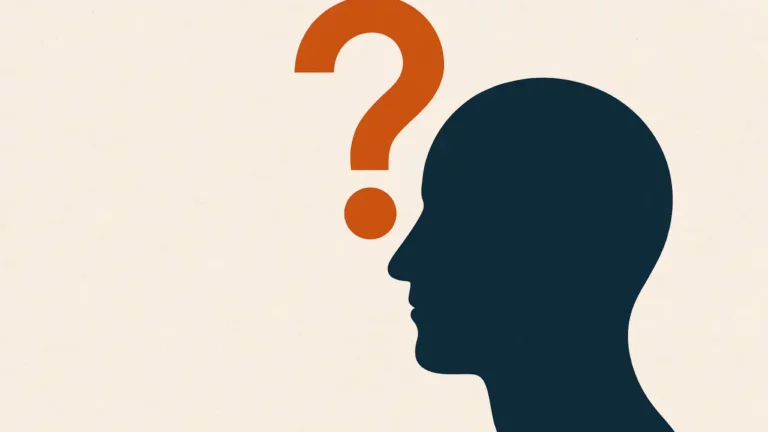
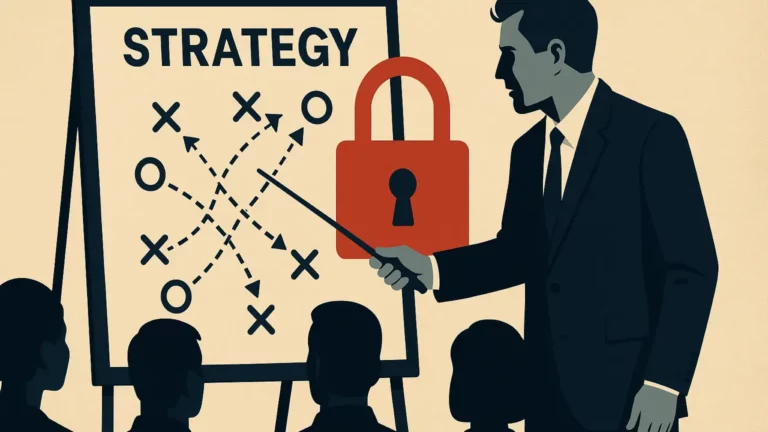

Responses